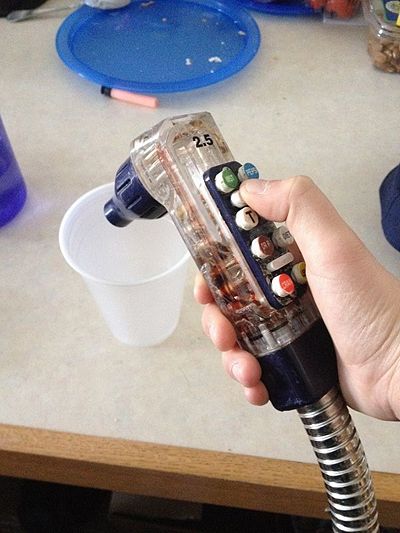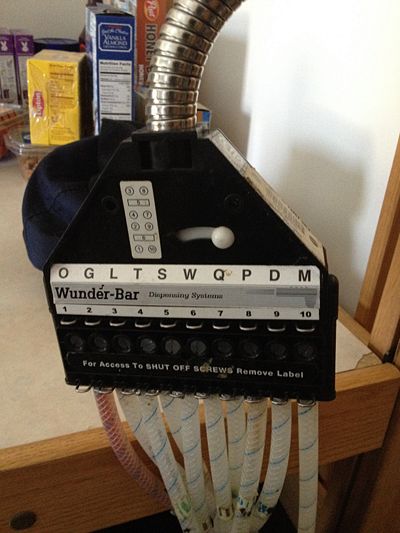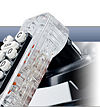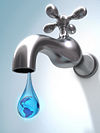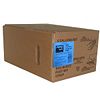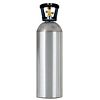Soda gun
From DDL Wiki
(→Manufacturing) |
(→Design for Environment [DFE]) |
||
| Line 1,169: | Line 1,169: | ||
| 1000L of soda per tank | | 1000L of soda per tank | ||
|} | |} | ||
| + | |||
| + | |||
| + | ==Team Members== | ||
| + | |||
| + | Elle Allen: DFMA Lead | ||
| + | |||
| + | Julien Locher | ||
| + | |||
| + | Taryn Monteleone: DFE Lead | ||
| + | |||
| + | Dan Murby | ||
| + | |||
| + | Christy St. John | ||
Revision as of 18:42, 1 February 2014
Contents |
Executive Summary
Use Study
1. What are the stakeholder needs?
- What attributes does the user need for from the product? What attributes does the retailer have?
- The User/Bartender:
- This product will be principally used by bartenders at commercial food and drink establishments. This product allows for multiple soda types to be served at a quick pace with uniform accuracy. The user expects that the product will complete the task at hand, namely separating different soda type.
- Some key qualities that the bartender expects are:
- Responsive, fast serving when each button is pressed
- Easy to understand button configuration and operating procedures allowing for operation with little training and muscle memory
- Typically, these types of devices are built in an industry-standard layout.
- Any hoses or pumps must reach the full range of bar in case other employees need it
- It may be common for multiple bartenders and/or waiters to need access as well
- Easy to repair, easy to maintain, easy to clean
- Avoiding contamination issues will allow the establishment to be healthy and satisfy customer needs (no one wants a coke with orange soda residue in it)
- The user expects durable quality
- During peak hours, the gun may be thrown around, dropped etc.
- The user would like the product to be “Ergonometricly” friendly
- Over the course of a long shift, the user may hold and operate the gun for a long time
- Most products come with a holster that allows for storing and draining when the gun is not in use. The product must fit snugly in the holder to prevent any jostling, but also accessible enough to allow for easy removal and use, ideally with one hand.
- The Restaurant/Bar Owner:
- From the perspective of the owner, this product should be cheap to manufacture, require little maintenance, and be durable enough to last a long time after purchase. In many cases, the beverage company itself is responsible for the installation and maintenance of the gun, but if the owner can avoid these costs, he would be interested.
- The Retailer:
- The retailer of the gun wants the product to be aesthetically pleasing, which encourages customers to buy the gun and use it at their bar. He also expects the gun to be of high-quality to support his business, which may include water-resistance and consistent flow-rate. The gun should be as compact as possible while performing the task at hand to allow for easier shipping, and giving bars the greatest amount of room to operate in, without bulky equipment in the way. Finally, the retailer wants the product to be easily explained and easily integrate-able into a bar. This allows for easier sales and a more diverse customer base.
2. How the product works mechanically
- - Press a button, and it opens a valve connected to a type of soda. The gun then mixes carbonated water and the designated syrup and distributes the mixture into a cup.
- - The strength of the syrup in the mixture and what types of drinks are available are customizable and adjustable, allowing for the user to create a set up that best works for their demand and beverage company contracts.
3. How the product is used (step by step)
- (Set-Up)
- Learn which buttons go to each soda
- Pick up gun
- Point nozzle to cup
- Press appropriate button
- Fill to required level
- Re-holster gun
Bill of Materials
| Part # | Part Name | QTY | Weight (g) | Function | Material | Manufacturing | Image |
|---|---|---|---|---|---|---|---|
| Soda Gun Sub-Assembly | |||||||
| 1 | "Round head 1/2" Length 1/8th" Dia Phillips" | 2 | <1 | Fastens button panel | Stainless Steel | Std Purchase Part | |
| 2 | Elliptical Soda Button (Top) | 2 | <1 | User input button for soda, designates type | Plastic | Injection Molded | |
| 3 | Eliptical Soda Button (Bot) | 2 | <1 | Translates input key face to release soda | Plastic | Injection Molded | |
| 4 | Circle Soda Button (Top) | 8 | <1 | User input button for soda, designates type | Plastic | Injection Molded | |
| 5 | Circle Soda Button (Bot) | 8 | <1 | Translates input key force to release soda | Plastic | Injection Molded | |
| 6 | "Flat head 1/4" len 1/8" dia philips" | 2 | <1 | Fastens panel to gun body | Stainless Steel | Std Purchase Part | |
| 7 | Plastic Washer (For Part #6) | 2 | <1 | Spacing | Plastic | Injection Molded | |
| 8 | Small Butterfly Clip | 2 | <1 | Aligns button to pin valves | Stainless Steel | Die Cast, punched | |
| 9 | Large Butterfly Clip | 2 | <1 | Aligns button to pin valves | Stainless Steel | Die Cast, punched | |
| 10 | Button Panel, blue, 10 button | 1 | 12 | Holds all buttons in place | Plastic | Injection Molded | |
| 11 | "Round head 1" len 1/8" dia flat screw" | 2 | <1 | Fastened gun to hose base | Stainless Steel | Std Purchase Part | |
| 12 | "Round head 1/2" len, 1/8" dia flat screw" | 2 | <1 | Fastened gun to hose base | Stainless Steel | Std Purchase Part | |
| 13 | "Hexagon, 7/8" len, 1/8" dia threaded head (Receives Part #11)" | 2 | <1 | Fastened gun to hose base | Stainless Steel | Std Purchase Part | |
| 14 | Nozzle caps, clear plastic | 10 | <1 | Reduces hose diameter into gun base | Plastic | Injection Molded | |
| 15 | O-ring, rubber | 10 | <1 | Seals hose to gun base | Rubber | Std Purchase Part | |
| 16 | "Round head, 1/4" len, 1/8" dia, philips screw" | 5 | <1 | Fasten back panel to gun | Stainless Steel | Std Purchase Part | |
| 17 | Back panel, blue | 1 | 6 | Provides grip to back of gun, aesthetic | Plastic | Injection Molded | |
| 18 | "Custom screw, 1/2" len, 1/8" dia, flat head" | 1 | <1 | Supports back panel | Stainless Steel | Std Purchase Part | |
| 19 | Rubber o-ring for Part #18 | 1 | <1 | Seals screw, provides snug fit | Rubber | Std Purchase Part | |
| 20 | "O-ring, rubber, red 1/4" dia" | 12 | <1 | Seals valve assy | Rubber | Std Purchase Part | |
| 21 | Clear plastic spring cap | 12 | <1 | Caps spring (Part #22) | Plastic | ||
| 22 | "Small spring, 1/2" len" | 12 | <1 | Translates input to opening valve, reset valv when released | Stainless Steel | Std Purchase Part | |
| 23 | "O-ring, rubber, red, 1/8" dia" | 12 | <1 | Seals (Part #24) to valve assy | Rubber | Std Purchase Part | |
| 24 | Pin | 12 | <1 | Holds valve in place, allows for vertical motion | Stainless Steel | Std Purchase Part | |
| 25 | Plastic valve | 12 | <1 | Glued to pin, opens/closes each syrup line | Plastic | Injection Molded | |
| 26 | Soda gun Nozzle, plastic, blue | 1 | 13 | Focuses final soda dispense | Plastic | Injection Molded | |
| 27 | "Black, O-ring, rubber, 1" dia" | 1 | <1 | Seals nozzle head to gun | Rubber | Std Purchase Part | |
| 28 | Soda gun body | 1 | 113 | Directs and organizes flow for all fluids exiting soda gun | Plastic | Machined in five layers, irreversibly sealed together, post-drilled | |
| 29 | Soda gun nozzle base | 1 | 10 | Creates central location for syrup+soda to mix and exit gun | Plastic | Turned, glued to soda gun body | |
| 30 | Soda gun nozzle base retaining pins | 2 | <1 | Create fixture points for nozzle base | Stainless Steel | Turned | |
| 31 | Stickers (misc.) | 12 | <1 | Provides information and instructions about product, barcodes, safety information use, and beverage types | Paper | Printed | |
| Flow Regulator Sub-Assembly | |||||||
| 32 | Plastic Regulator Backing | 1 | 41 | Hold tubes to regulator | Plastic | Injection Molded | |
| 33 | "flat top, 3/4" len, 1/4" dia, philips head screw" | 4 | 3 (ea) | Fastens regulator casing together | Stainless Steel | Std Purchase Part | |
| 34 | Tube retainer, retaining clips | 20 | <1 | Retain the tube retainers to base | Stainless Steel | Std Purchase Part | |
| 35 | Tube housing, main body | 1 | 46 | Holds the tube housing | Plastic | Injection Molded | |
| 36 | Tube housing, single holder | 10 | 6 | Connects two sides of tubes | Plastic | Injection Molded | |
| 37 | Shut-off screw | 10 | <1 | Shuts off soda flow | Plastic | Injection Molded | |
| 38 | "Shut-off screw o-ring 1/4" dia, rubber" | 10 | <1 | Seals shut-off screws | Rubber | Std. Purchase Part | |
| 39 | Flow adjustment screw | 10 | <1 | Adjusts syrup/water ratio | Plastic | Injection Molded | |
| 40 | "Flow adjustment screw o-ring, 1/4" dia, rubber" | 10 | <1 | Seals adjustment screw | Rubber | Std. Purchase Part | |
| 41 | "Housing retaining pin 1", 5/32" dia" | 2 | 4 | Holds tube housing halves together | Stainless Steel | Cut to length | |
| 42 | Pivot pin for separating mechanism | 1 | <1 | Creates pivot point for half separator of plastic reg. housing | Stainless Steel | Cut to length | |
| 43 | Plastic regulator fronting | 1 | 63 | Hold tubes to regulator | Plastic | Injection Molded | |
| 44 | Cap of separating mechanism, white | 1 | <1 | User interaction point for separator mechanism | Plastic | Injection Molded | |
| 45 | Cap of separating mechanism pivot | 1 | <1 | Held cap to main separating body | Stainless Steel | Turned/Lathed | |
| 46 | Main separator body | 1 | 5 | Separates the halves | Plastic | Injection Molded | |
| Small Tube Sub-Assembly | |||||||
| 47 | Small Eaton Synflex Tubing (4203-0400) | 10 | 11 | Carries syrup to gun | Plastic | Std. Purchase Part | |
| 48 | Plastic Hose Clamping Ring (orange) | 10 | <1 | Connects syrup tubing to end cap | Plastic | Injection Molded | |
| 49 | Ridged End-Cap | 10 | <1 | Connects tubing to dispensing system | Plastic | Injection Molded | |
| 50 | "O-ring, rubber, 3/8" dia, black" | 10 | <1 | Seals end cap | Rubber | Std. Purchase Part | |
| 51 | Plastic, anti-friction ring | 1 | 1 | Prevents metal casing from cutting tubing | Plastic | Injection Molded | |
| 52 | Outer tubing casing, metal | 1 | 200 | Gathers all tubes, protects against wear, allows for flexible movement | Stainless Steel | Std. Purchase Part | |
| 53 | Soda gun base connector | 1 | 11 | Connects handheld gun to the tubing casing | Plastic | Injection Molded | |
| 54 | Tubing holding plate | 1 | 10 | Holds all tubes in correct positions for handheld gun | Stainless Steel | Cut, stamped | |
| Large Tube Sub-Assembly | |||||||
| 55 | Rev-Flex P-E Hose | 10 | 63 | Carries liquid from source to soda gun assembly | Plastic | Std. Purchase Part | |
| 56 | Hose clamp | 10 | 2 | Fastens metal hose cap to hose | Stainless Steel | Std. Purchase Part | |
| 57 | O-ring, rubber, black | 10 | <1 | Seals threaded hose cap to assembly | Rubber | Std. Purchase Part | |
| 58 | Hose cap, metal | 10 | 7 | Allows liquid to flow from one tubing to another | Stainless Steel | Machined | |
Design for Manufacturing and Assembly [DFMA]
To observe areas of simplification and improvement for the system, a manufacturing and assembly analysis was run to look at ways to optimize the system for simplicity, ease of manufacture, and component minimization. While part minimization is limited by the number of soda types that can flow through the gun and their respective repeating subassemblies, the designs were not close to being fully optimal.
Manufacturing
| Guideline | Good Design Choices | Areas for Improvement |
|---|---|---|
| Minimize Part Count: Eliminate fasteners, part consolidation |
|
|
| Standardize Components: Take advantage of economies of scale and known component properties |
|
|
| Commonize Product Line: Economies of scale, minimum training and equipment |
|
|
| Standardize Design Features: Common dimensions for fewer tools and machine set-ups |
|
|
| Keep Designs Simple: Simplest way to achieve needed functionality |
|
|
| Multifunctional Parts: simplifies by letting one component serve many functions |
|
|
| Ease of fabrication: Choose materials easy to work with |
|
|
| Avoid tight tolerances: because they cause cost and machining time to increase drastically |
| None
|
| Minimize secondary or finishing operations: |
|
|
| Take advantage of special process properties: like coloring plastic |
|
|
Assembly
| Guideline | Good Design Choices | Areas for Improvement |
|---|---|---|
| Minimize Assembly Surfaces: and sequence them |
|
|
| Use subassemblies: can be tested and assembled separately, or outsourced |
|
|
| Mistake-proof: unambiguous, unique assembly orientation | None
|
|
| Minimize fasteners: snap fits and part consolidation | None
|
|
| Minimize handling: position for insertion or joining is easy to achieve |
|
|
| Minimize assembly direction: ideal is to add each component from top to base |
| None
|
| Provide unobstructed access consider assembly path | None
|
|
| Maximize assembly compliance:' chamfers and radii help assemble parts with variance |
| None
|
| Minimize extraneousness: features that have no functional use but aid with assembly | None
| None
|
Failure Mode and Effect Analysis [FMEA]
We performed a Failure Mode and Effect Analysis on the soda gun. We considered individual parts, sub assemblies, and user interaction when conducting this analysis. The primary focus of this analysis is to identify the cause and effect of potential failure modes in our system. We began by gathering a list of parts and sub assemblies and different failure modes for each part. We then discussed the effects of each failure, the causes of each failure, and any design controls implemented to the part (if any). We scored the severity of failure (S), probability the failure occurs (P), and ease of detection (D) on a scale from 1-10 to determine an ultimate risk priority number (RPN). Parts with higher RPN are of highest priority when considering a redesign for a safer system.
| Item and Function | Failure Mode | Effects of Failure | S | Causes of Failure | O | Design Controls | D | RPN | Recommended Actions |
|---|---|---|---|---|---|---|---|---|---|
| O-Ring: Seals tubing and valves | Break or Snap off | loss of fluid control | 4 | stress/ fatigue in material | 2 | Indention in tubing or valve where each o-ring is placed | 4 | 32 | Thicker o-ring |
| O-Ring: Seals tubing and valves | not sealing properly | fluid leakage | 4 | material overstretched | 1 | Indention in tubing or valve where each o-ring is placed | 5 | 20 | more flexible o-ring |
| Soda Button Valve: open/close to release/prevent fluid | not fully opening | loss of soda output | 4 | valve not properly aligned | 5 | spring and butterfly clips align valves | 3 | 60 | tighter tolerances to maintain alignment |
| Soda Button Valve: open/close to release/prevent fluid | not fully closing | endless soda output/ leakage | 4 | valve not properly aligned | 5 | spring and butterfly clips align valves | 3 | 60 | tighter tolerances to maintain alignment |
| Soda Tubing: pathway for fluid to flow from its original container into the soda gun | puncturing/ kinking | leaking | 4 | ends of tubing catch on metal connectors | 4 | metal casing gathers individual tubes | 2 | 32 | plastic buffers between metal connectors and tubing, rounded edges on connectors |
| Soda Tubing: pathway for fluid to flow from its original container into the soda gun | puncturing/ kinking | incorrect soda ratios | 2 | ends of tubing catch on metal connectors | 3 | metal casing gathers individual tubes | 3 | 18 | plastic buffers between metal connectors and tubing, rounded edges on connectors |
| Soda button spring: stores mechanical energy when valve is pressed, allowing valve to open and close easily | sticks and doesn't properly compress | valves and buttons would not work | 3 | fluid debris build up around spring | 1 | none | 6 | 9 | ensure spring is anti-corrosive |
| Tightening Screws: adjust syrup ratio allowed into soda gun system | over/ under tightened | incorrect syrup ratio | 2 | user misjudges amount of rotations needed to provide correct flow rate | 3 | none | 3 | 18 | provide some guidelines that help the user identify how many rotations signify the correct flow rate |
| Tightening Screws: adjust syrup ratio allowed into soda gun system | stripped screw head | loss of flow control | 4 | user applies too much pressure to screw head | 2 | none | 2 | 16 | consider re-selecting a stronger material less prone to stripping |
| Tube clamps: fasten tubes to soda gun | clamps fall off | loss of flow control | 2 | contact stress concentration on clamping | 2 | none | 4 | 16 | redesign clamps for higher factor of safety |
| Nozzle: consolidates flow and directs it into drinking cup | fatigue, cracking | soda leaks and sprays in unwanted direction | 3 | too high of fluid pressure | 2 | none | 1 | 6 | use a stronger plastic to better resist fatigue |
| Nozzle: consolidates flow and directs it into drinking cup | fatigue, cracking | soda leaks and sprays in unwanted direction | 3 | user misuses, drops soda gun onto nozzle | 3 | none | 1 | 9 | use a stronger plastic to better resist fatigue |
| Plastic Buttons: designate soda type and release valves | fatigue, overuse | loss of selection modes | 3 | contact stress from overuse or user misuse | 3 | none | 1 | 9 | design stronger connection for buttons to resist early fatigue |
| Soda gun: Directs and organizes flow for all fluids exiting soda gun | clogging from syrup build up | product (at least one soda line) becomes nonfunctional | 5 | not properly cleaned/maintained | 3 | none | 1 | 15 | implement cleaning feature to clear out all fluid lines |
| Soda gun: Directs and organizes flow for all fluids exiting soda gun | fatigue, cracking | product (at least one soda line) becomes nonfunctional | 5 | user misuse, dropping or slamming product | 3 | none | 1 | 15 | design soda gun with a higher factor of safety to resist early fatigue |
| Butterfly clips: align valves and provide normal force when button is pressed | jam or stick | valves don't work properly, potentially releasing multiple soda syrups | 2 | contact stress knocks clips out of place | 3 | pocket cut in soda gun body for clip placement | 5 | 30 | fasten butterfly clips down with screw or adhesive |
| Regulator housing: gathers, labels, and aligns soda syrup tubes | fatigue, cracking | tubes not consolidated | 1 | contact stress on part | 2 | none | 1 | 4 | redesign housing to resist early fatigue, consider stronger plastic |
| Regulator housing: gathers, labels, and aligns soda syrup tubes | syrup label sticker falls off | loss of syrup organization; can't tell which tube holds which syrup | 2 | liquid spills on label, causing adhesive to wear | 2 | none | 1 | 4 | eliminate sticker all together and implement better labeling system |
Design for Environment [DFE]
We found that the soda gun is optimized for multiple users to deliver a variety of soda drinks from the same location. In terms of functional optimizations, the soda gun could be made more ergonomic and more easily cleaned. These changes could improve the life of the gun and its ease of use. Individual parts can be optimized to take into account the degradable nature of the materials used, but the added cost of different materials could make environmentally friendly materials less practical to use or even more wasteful. Further, the packaging of the gun could be optimized to reduce waste and save on transportation costs. Seeing as the gun is usually bought in combination with other equipment, the total packaging and transportation costs would need to be examined for the purchased assembly as a whole. Finally, the parts can be made easily replaceable (especially the O-rings) which would prolong the life of the soda gun and cause less waste by allowing the gun to be reused instead of thrown away. This can be done by standardizing the part, making the gun easy to take apart with only simple tools, and providing consumers with easy-to-follow electronically-delivered repairing instructions.
EIOLCA - Economic input-output life cycle assessment
In this section, we are studying the environmental impact of a whole soda dispensing system, considering the emission of greenhouse gases in the form of equivalent millions of tons of CO2 (mtCO2e). We will use the model from eiolca.net . The US 2002 Purchaser database has been used and the prices entered accordingly.
| Production | Use | ||||
|---|---|---|---|---|---|
| Item purchased | Soda Gun System | Tap Water | Syrups | Electricity | CO2 |
| (a) Picture | |||||
| (b) Economic Sector # and Name | 333319 : Other Commercial and Service Industry Machinery Manufacturing | 483000 : Water transportation | 311930 : Flavoring syrup and concentrate manufacturing | 221100 : Power generation and supply | 325120 : Industrial gas manufacturing |
| (c) Reference Unit | 1 system | 1 gal | 1 gal | 1 kWh | 1 20lb tank of CO2 |
| (d) Units Consumed per Product Life | 1 | x | 1/5 *x | y | z |
| (e) Cost per Unit ($ 2002) | $ 4000 now ? | $ 0.002 in 2013 -> $ 0.00154 in 2002 | $ 13 in 2013 -> $ 10 in 2002 | $ 0.15 in 2013 -> $ 0.12 in 2002 | $ 20 in 2013 -> $ 15.44 in 2002 |
| (f) Lifetime Cost = (d)*(e) ($ 2002) | |||||
| (g) Economy-wide mtCO2e released per $1M of output for sector (b) | |||||
| (h) Implied mtCO2e released per Product Life = (g)*(f)/$1M | Text here | Text here | Text here | Text here | Text here |
| (i) CO2 Tax @ $30/mtCO2e = $30*(h) | Text here | $ | $ | $ | $ |
| (j) Assumptions | 360 cups per day = 22.5 gallons per day | 1:5 mix with water | 1000L of soda per tank | ||
Team Members
Elle Allen: DFMA Lead
Julien Locher
Taryn Monteleone: DFE Lead
Dan Murby
Christy St. John